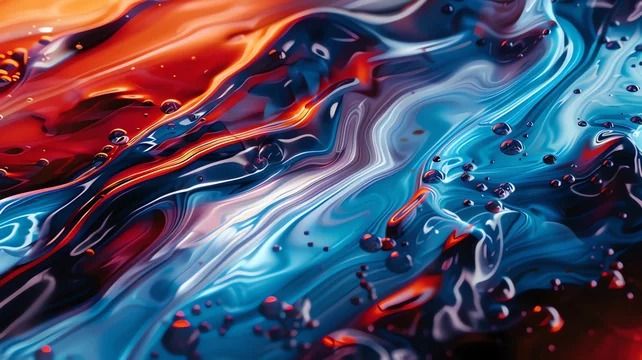## Introduction
In the realm of 3D graphics, achieving photorealism is the holy grail that many artists strive for. While modeling, texturing, and lighting are the foundational pillars of creating stunning renders, the true magic often lies in the post-processing phase. Richard Yot's free training on post-processing for photorealism in Blender emphasizes an essential truth: to create an image that truly resembles a photograph, one must embrace the imperfections that define real-world photography. In this article, we will dive into the intricate world of post-processing within Blender, exploring techniques that can add depth, realism, and photographic charm to your renders.
## Understanding Photorealism
### The Essence of Photographic Realism
Photorealism extends beyond mere visual accuracy; it encapsulates the nuances and subtleties that characterize real-life photographs. Photographs are often defined by their imperfections: the subtle lens distortions, the play of light and shadow, and the texture variations that occur in organic and manufactured materials. To replicate this with 3D renders, artists must focus on capturing these intricacies not just during the modeling phase, but also through effective post-processing techniques.
### The Role of Post-Processing in Blender
Post-processing is the final stage in rendering where artists can manipulate their images to enhance visual quality and realism. In Blender, this involves using the built-in compositor and various other tools to adjust colors, contrast, and sharpness, as well as adding effects that mimic characteristics of real-world photography.
## Essential Post-Processing Techniques
### Adjusting Colors and Contrast
One of the first steps in post-processing for photorealism is adjusting the colors and contrast of your render. In Blender, you can utilize the Color Balance and Curves nodes within the compositor. These tools allow you to fine-tune the color grading of your images, enhancing their visual appeal.
- **Color Grading:** It helps in establishing a mood and enhancing certain elements within your render. For example, a warm color palette can evoke comfort, while cooler tones can convey a sense of calmness or desolation.
- **Contrast Adjustment:** By manipulating contrast, you can create depth in your images. High contrast can help emphasize details, while low contrast can soften the overall look, making it feel more organic.
### Adding Depth of Field
Depth of field (DoF) is a critical aspect of photography that defines how much of an image is in focus. Blender allows you to simulate this effect in your renders, adding a layer of realism.
- **Focus Points:** By selecting a specific focus point within your scene, you can blur the foreground and background, drawing the viewer's attention to the main subject. This mimics the way actual cameras function and can dramatically enhance the photorealistic quality of your work.
- **Lens Simulation:** Different lenses have different depth of field characteristics. Understanding how various lens types affect focus can help you create more lifelike images.
### Emulating Lens Imperfections
Real-world lenses introduce a range of imperfections that can add character to your renders. By incorporating these lens characteristics in your post-processing workflow, you can push the boundaries of photorealism.
- **Lens Distortion:** You can simulate lens distortion effects using Blender's compositor. This can include barrel distortion or pincushion distortion, which can make images feel more authentic.
- **Chromatic Aberration:** This optical illusion creates color fringing along the edges of an image and can be replicated in post-processing. Adding slight chromatic aberration can introduce a subtle realism that draws attention to the imperfections found in everyday photography.
## Enhancing Textures and Details
### Incorporating Grain and Noise
Adding a slight grain or noise to your renders can bridge the gap between digital perfection and the organic feel of real photographs. This technique mimics the film grain found in traditional photography and can make digital images feel more authentic.
- **Texture Enhancement:** By overlaying a texture of film grain and adjusting the opacity, you can create a more tactile feel to your renders.
- **Noise Levels:** Controlling the level of noise is crucial. Too much can detract from the quality, while just the right amount can add depth without overwhelming the viewer.
### Using Vignetting Effects
Vignetting is a technique that darkens the corners of an image, guiding the viewer’s eye toward the center. This effect can be easily achieved in Blender’s compositor and can significantly enhance the overall composition of your render.
- **Subtle Application:** When applying vignetting, subtlety is key. Overdoing it can lead to an unrealistic look. A slight gradient that darkens the edges can effectively focus attention on the main subject.
- **Integration with Lighting:** Consider how your lighting interacts with the vignette to maintain a cohesive and realistic atmosphere.
## Conclusion
Post-processing is an indispensable aspect of achieving photorealism in Blender. By understanding and applying techniques such as color adjustment, depth of field simulation, and the incorporation of lens imperfections, artists can elevate their 3D renders to photographic mastery. Richard Yot’s training serves as a valuable resource for those eager to explore these techniques and refine their skills. Remember, the pursuit of photorealism is not just about replicating reality but also about embracing the imperfections that make photographs unique. So, take the leap into post-processing, and watch your Blender renders transform into breathtaking visual narratives.
Source: https://www.blendernation.com/2025/11/15/post-processing-for-photorealism-in-blender/
